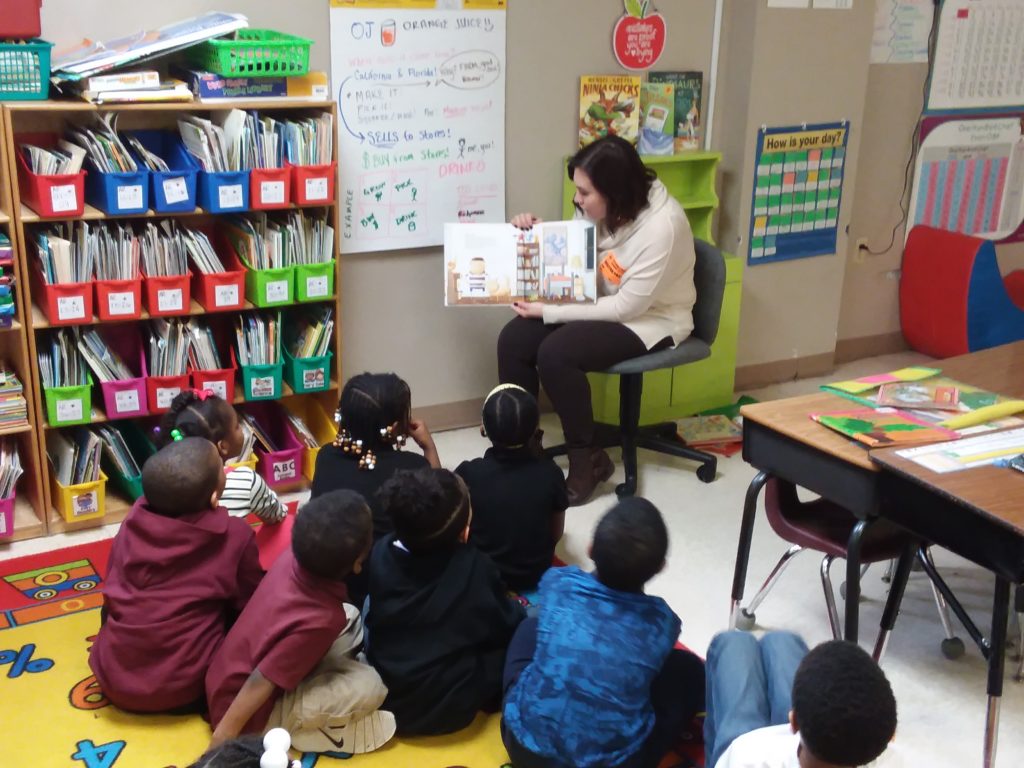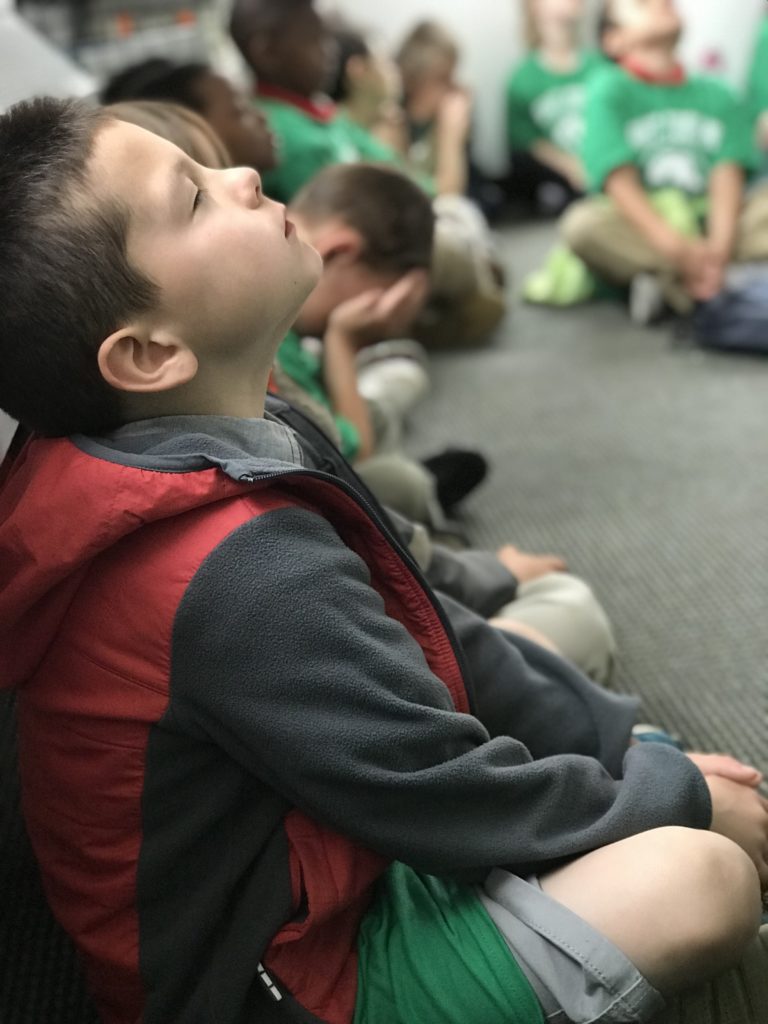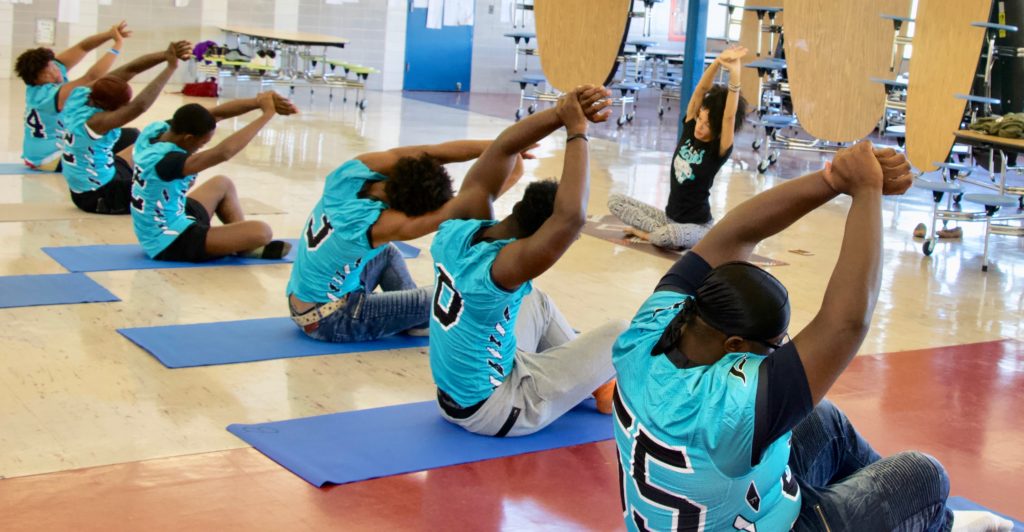By Zach Neithercut
Once built almost exclusively around an annual 10-mile road race sustained by a small staff, the Crim Foundation has expanded into a major influence in Flint life, with an $8 million budget, more than 50 employees, many year-round events, a city-wide emphasis on mindfulness, and community education programs for 5,000 Flint students.
“If there’s something regarding health in the Flint community, the foundation is usually involved in some way,” said Lauren Holaly-Zembo, soon to be the foundation’s new CEO.
And now the Foundation faces hard decisions on what to do about its massive August race events–which may have to be canceled or changed in the face of the coronavirus.
Currently vice president of the foundation and acting interim CEO, Holaly-Zembo describes the foundation today as a “convener” of health and wellness for the greater Flint community and beyond.
The non-profit foundation continues to build from its roots, beginning as a 10-mile race in 1977 organized by past Michigan House Speaker Bobby Crim, now 88, and his late assistant, Lois Craig. Crim, still an active member of the foundation board, ran the 10-mile race last year and has said if the race is held this year he again hopes to run.
A panoply of races available from year to year, which have grown to attract up to 50,000 to downtown Flint , now include: the classic 10-mile, a five-mile, a five-kilometer, a one-mile, also known as the “Michigan Mile” through the UM – Flint on Friday night of the race festival weekend, and a Teddy Bear trot.
The race began as a benefit for the Special Olympics, and retains a connection. The foundation hosts a Special Olympics race during race weekend, with the Crim adult training program sponsoring the Olympians by cheering them on and helping raise money. Proceeds from the Special Olympics race go directly to Special Olympics.
The race, Holaly-Zembo explained, has always acted as a celebration of everything Flint has to offer. And it has established itself as one of the cornerstones for Crim’s commitment to Flint as the foundation continues to grow.
It has drawn participants from 40 states and depending on the year, seven to ten countries, she said.

Lauren Holaly-Zembo reading to students at the International Academy of Flint (Photo from Crim Foundation)
Holaly-Zembo, 35, began working for the foundation in 2008, when there were only 10 employees. Working alongside Gerry Myers now for over 11 years, who plans to step down as CEO later this year, Holaly-Zembo described her time with Myers as a “privilege” and an “amazing journey.” Today, the foundation has expanded to include approximately 50 employees, including an estimated 50 AmeriCorps members.
Holaly-Zembo, who lives in Grand Blanc, has a near-lifetime connection with the Crim. She said she participated in the Teddy Bear Trot as a child, ran the 10- mile for the first time in 2008, and has done the 10-mile every year since, with the exception of her two pregnancies.
A Grand Blanc High School graduate, Holaly-Zembo brings to her work a bachelor’s degree in social work from Western Michigan University and a masters in social work from the UM-Ann Arbor with a focus on community organizing.
Her family has participated in the races for years, including the 5k walk as a family. She has also participated in the adult training program as a group leader.
In response to the current COVID-19/coronavirus pandemic, employees are currently working remotely as Holaly-Zembo admitted “situations rapidly changing are causing us to adjust daily!”
“We are still very hopeful that we will be able to host the HAP Crim Festival of Races this August,” she said in early April. “We continue to monitor guidance from the CDC and governor and will adjust as needed.”
This week, race director Andy Younger sent an email blast to past and present Crim participants with a survey attached about their preferences for the event this year.
“During this time of uncertainty, planning an event of any size is becoming difficult. We are wanting to make decisions that ensure everyone’s safety while providing the best experience to you, our community of runners, and walkers,” Younger wrote.
The survey link is here: quick survey
Built with many partnerships
Working with an estimated $8.1 million operating budget, the foundation’s funding comes from multiple sources, including grant funds, federal funds like AmeriCorps programming, the SNAP program, individual donors, and significant local philanthropic anchors such as the Community Foundation of Greater Flint, the Ruth Mott Foundation, The Charles Stewart Mott Foundations, and United Way of Genesee County, according to Holaly-Zembo.
Specifically, she said, “We currently receive roughly $3.7 million in support from the C.S. Mott Foundation, but $3.1 million of that is just to support the Flint Community Education Initiative (Flint CEI).
She notes the foundation maintains six percent administrative cost, with all of the additional funds being directed into community programming.
Believing in a “collaborative” approach, Holaly-Zembo emphasized foundation partners with more than 60 organizations, including local businesses, other non-profits and as school districts throughout the Flint area.
“While the Crim serves as the lead agency for the Flint CEI, it is truly the work of over 60 partners throughout the community,” she added. “More than half those funds ($1.5 million) are then subcontracted to other partner organizations and individuals to provide services and programs to Flint families.”
As the foundation performs its work, Holaly-Zembo said Crim staff evaluate what they do by taking surveys as well as talking with those they serve, including race participants. Advisory committees further help staff understand what people enjoyed and what they need regarding the foundation’s programming.
The foundation works with university partners such as Michigan State University for the foundation’s Community Education Initiative and mindfulness programs.
With MSU, the foundation measures the impact of programs to help determine “what works and what doesn’t” and to help understand what the community needs for its health, Holaly-Zembo explained.

Jared Badour doing strengthening exercises with Potter Elementary School students (Photo from Crim Foundation)
Mindfulness has become a central focus
As the picture of what lies ahead takes shape, Holaly-Zembo said the foundation plans to build upon what it has done, with a focus on engaging with more people, believing in the foundation’s ability to be a national leader with mindfulness.
The foundation has expanded its focus on mindfulness to a national level, aiming to create a strategic framework of what being a mindful city is, including a program on mindful cities.
Holaly-Zembo explained how the foundation spreads the message of mindfulness to different sectors within a city including businesses, civic and safety offices, healthcare, and schools.
She said for the foundation, mindfulness equals “being compassionate and self-aware,” living in the present moment, and including activities such as mindful listening, breathing, moving, eating, and journaling. The foundation offers these programs locally both for adults as well as kids in schools.

Durant-Tuuri-Mott Elementary School student Alex Kim engaging in mindfulness (photo from Crim Foundation)
Initially involved with two schools in 2014, Holaly-Zembo said the foundation now serves 13 schools, in line with the most recent City of Flint Master Plan, where a community education model was one of the highest priorities for residents.
That education initiative includes nutritional education, sports programs, and mindfulness both for kids and their families as well as other adults.

Canisha Bell leading yoga with Southwestern Academy football team (Photo from Crim Foundation)
Community education in a long Flint tradition
Holaly-Zembo explained that the community education model that Flint first became famous for in the 1950s has also become a national model. The foundation is involved at the national level as a member of the Coalition for Community Schools, engaging with national thought partners who provide technical assistance and professional development support.
Using mindfulness for approximately 5,000 kids in schools, the foundation aims to help individuals use certain tools when experiencing overwhelming situations or feelings, Holaly-Zembo explained, including the addition of a mindfulness room at Doyle-Ryder Elementary where students can go to take a mindful moment. Holaly-Zembo admitted the addition of mindfulness programs in schools was “risky at first,” but has paid off with great benefits.
As the next six or so months evolve, Holaly-Zembo stated she will work side-by-side with Myers until his Fall 2020 retirement later to make transitions smooth.
“We will not let our work suffer from the COVID-19/coronavirus pandemic,” she said.

Otis Liggins from the Freeman Elementary Soap Box Derby (Photo from Crim Foundation)
Banner photo: Start of the Crim 10-mile race, 2016, photo by Edwin Custer.
EVM Staff Writer Zach Neithercut can be reached at zneithercut@gmail.com. EVM Editor Jan Worth-Nelson contributed to this report. She can be reached at janworth1118@gmail.com.


You must be logged in to post a comment.